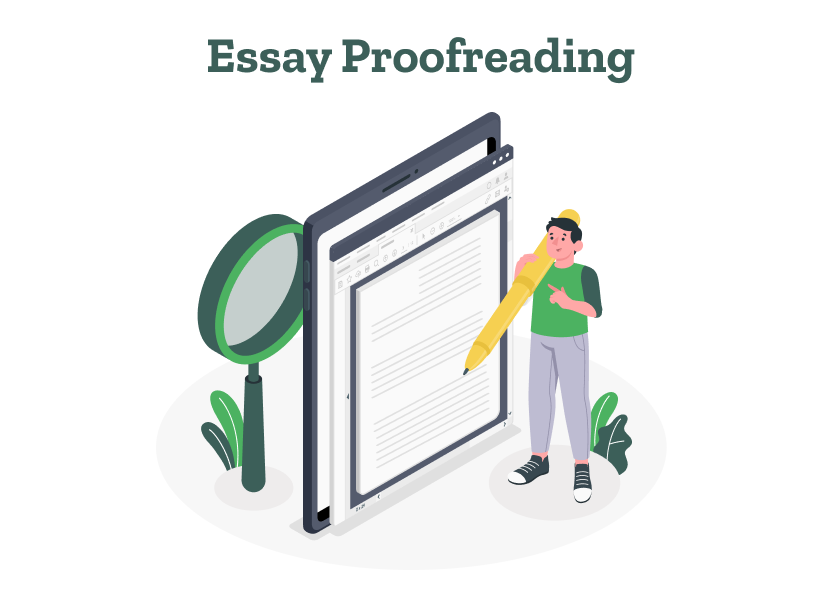- 10 Myths About Open Access Journal Publishing: Busted
- A List of Writing Contests in 2022 | Exciting Prizes!
- Common ESL Grammar Mistakes + How to Fix Them
- 10 Best Book Publishing Companies in 2023
- Screenplay Editing: Importance, Cost, & Self-Editing Tips
- Screenplay Proofreading: Importance, Process, & Cost
- Script Proofreading: Rates, Process, & Proofreading Tips
- Manuscript Proofreading | Definition, Process & Standard Rates
- 10 Best ESL Books for Students & Language Learners
- Tips to Write Better if English Is Your Second Language
- Novel Proofreading | Definition, Significance & Standard Rates
- Writing Contests 2023: Cash Prizes, Free Entries, & More!.
- Book Cover Design: An Introduction
- How Much Does Self-Publishing Cost?
- How to Hire a Book Editor in 5 Practical Steps
- Self-Publishing Options for Writers
- How to Promote Your Book Using a Goodreads Author Page
- A Step-By-Step Guide to Self-Publishing
- Traditional Publishing vs. Self-Publishing: Which Is Better?
- 7 Essential Elements of a Book Cover Design
- What Makes Typesetting a Pre-Publishing Essential for Every Author?
- 4 Online Publishing Platforms To Boost Your Readership
- How to Market Your Book Effectively
- What is Developmental Editing? A Self-Editing Checklist
- How to Find the Perfect Book Editor for Your Manuscript
- What Is an ISBN & How to Get One: The Complete Guide
- Typesetting: An Introduction
- Quick Guide to Novel Editing (with a Self-Editing Checklist)
- Manuscript Editing in 2023: Elevating Your Writing for Success
- Quick Guide to Book Editing [Complete Process & Standard Rates]
- How to Create Depth in Characters
- Starting Your Book With a Bang: Ways to Catch Readers’ Attention
- How To Craft a Murder Mystery Story
- How to Write a Powerful Plot in 12 Steps
- Research for Fiction Writers: A Complete Guide
- Short stories: Do’s and don’ts
- Joseph Campbell’s Hero’s Journey: Worksheet & Examples
- How to Write Dialogue: 7 Rules, 5 Tips & 65 Examples
- How to Write a Novel in Past Tense? 3 Steps & Examples
- What Are Foil and Stock Characters? Easy Examples from Harry Potter
- How To Write Better Letters In Your Novel
- Types of Characters in Fiction
- How to write your Protagonist
- How to Write Unforgettable Antagonists
- On Being Tense About Tense: What Verb Tense To Write Your Novel In
- How To Create A Stellar Plot Outline
- How to Punctuate Dialogue in Fiction
- On Being Tense about Tense: Present Tense Narratives in Novels
- The Essential Guide to Worldbuilding [from Book Editors]
- What Is Point of View: 1st, 2nd & 3rd POV with Examples
- How to Create Powerful Conflict in Your Story | Useful Examples
- How to Write a Book: A Step-by-Step Guide
- 5 Elements of a Short Story & 6 Stages of a Plot
- How to Write a Short Story: 6 Steps & Examples
Still have questions? Leave a comment

Checklist: Dissertation Proposal
Enter your email id to get the downloadable right in your inbox!

Examples: Edited Papers
Enter your email id to get the downloadable right in your inbox!
What Are Foil and Stock Characters? Easy Examples from Harry Potter
 Aug 17, 2022
Aug 17, 2022 4
min read
4
min read
- Tags: Fiction Writing
Characters in fiction come in many shapes and forms. We can divide them into various types of characters, such as round or flat, major or minor, and static or dynamic. But the types of characters we’re looking at in this article are the character foils and the stock characters. We’ve also added a few examples of character foils, so you can understand them better. Let’s get started!
What are stock characters?
Stock characters are the archetypes you often encounter in fiction, be it the femme fatale, the nerd, or even the hero. Writers have used these stereotypes for centuries, so it’s very easy for us to recognize them as character archetypes.
How often does it happen that you’ve started writing your book, and you notice that one of the characters is far too familiar? Like you know them from some book or movie already.
Though it’s completely an original character you brewed from your imagination, it feels like the Simpsons already did it. That’s a stock character in the making! A couple of them always find their way into stories.
Let’s take the example of Shakespeare: the stock character of the Fool props up in many of his plays, from Twelfth Night to King Lear. When you look at the wisecracking loony character in these plays, it’s easy to be reminded of Luna Lovegood from the Harry Potter series!
Archetypes are formed when people in different books and plays are formed from the same elements of character. Someone who embodies the elements of bravery, justice, and kindness becomes the hero, while the cowardly, cruel tyrant becomes the villain.
Character archetypes like the hero, the villain, the damsel in distress, and—as seen above—the fool, are known as stock characters. They form the stock of people that you can easily expect to find in any given story, be it a play, a novel, or even a movie.
Often, stock characters do not change during the course of a story. They also often form the minor characters in a story.
Stock characters gained popularity through the Commedia dell’ arte style of theater. The audience of these comic plays was quickly able to identify each character based on similar characters in previous plays. The longstanding tradition persists today in sitcoms, where a specific group of stock characters is always present.
What is a character foil?
Writers mainly rely on characters to create conflict. To achieve this effect, they often create a character who is the polar opposite of the protagonist. This character is known as a foil.
However, unlike the antagonist, who is the opposing force to the main character, a foil does not always play a negative role. A foil character serves as a contrast to better highlight the protagonist’s qualities.
Often, an antagonist’s characteristics are easier to play off against the main character. This is the reason that antagonists are often foils of the main character.
Let’s consider a simple example: if one of your characters is Positive Peter and his best friend is Negative Nancy, then Nancy is a foil to Peter. Nancy is the opposite of Peter, but she’s his best friend, not an enemy.
Foil characters share few or no values or traits with the main character. This allows for interesting types of character relationships to emerge.
Using foils is the easiest of literary plot devices. You simply put together two contrasting characters who highlight each other’s character traits. The most common foil characters are heroes and villains, whose goals and values are opposite to each other.
A famous character foil example is that of Watson in the Sherlock Holmes stories, whose ordinary foresight serves to highlight the genius of Holmes. You will also find many foils in Shakespeare. For example, the skeptical Mercutio in Romeo and Juliet is a clear foil to the emotional Romeo.
Why are foils important?
There are three reasons why foils are important in a story:
- Foils establish the protagonist as central to the story.
- They accentuate the protagonist’s traits and motivations.
- They help separate the good from the bad, the ideal from the undesirable, in a given story.
Can there be more than one character foil?
Yes, many works of literature have more than one set of foils.
There can be multiple characters that foil each other or simply many sets of foil characters for the major characters in a story. This tends to happen more in longer stories. Book series and TV series often feature many characters that foil each other.
Foils in the Harry Potter series
Harry Potter and Draco Malfoy are pretty much textbook examples of foil characters. They have a lot in common: They both study at Hogwarts, are the same age and gender, and play the same position on their respective Quidditch teams.
But beyond these surface similarities, they are polar opposites. Harry adores Dumbledore while Draco grows up idolizing Voldemort. The former cares deeply about those he loves, while the latter only cares about himself. Harry is strong while Draco is weak.
Harry’s maternal cousin Dudley Dursley is another foil to him. Dudley is pompous, arrogant, and greedy, everything that Harry isn’t. Vernon and Petunia treat Harry poorly, while they spoil Dudley endlessly.
Note that even if Dudley is a foil to Harry, the antagonist of the story is Draco Malfoy. So, foils can come in many different variations.
Now that you have a clear idea about stock and foil characters, you can employ them in your next story. We can hardly wait for the manuscript to arrive on our story editor’s desk!
No matter foil or stock, all types of characters need great dialogue. So go ahead and read up on how to write powerful dialogue in your story!
Here are some related articles that you might find interesting:
- What Is Point of View: 1st, 2nd & 3rd POV
- How to Write Dialogue
- How to Create Powerful Conflict in Story











Excellent blog you have here but I was curious about if you knew of any discussion boards that cover the same topics discussed here? I’d really love to be a part of community where I can get comments from other experienced people that share the same interest. If you have any suggestions, please let me know. Cheers!